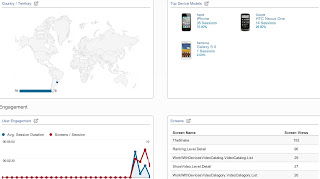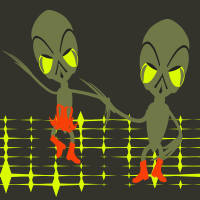8 reasons why Model Driven Development is great
This article was inspired by some conference talk with some prospects that basically are worried about the dangers around Model Driven Development, which really started me thinking.I believe there are many articles written about the dangers of Model Driven Development (MDD), many of them have valid points and some others are more of an historical and repeated nature, not taking in consideration the current developments in this area.
You'll hardly find articles saying "8 reasons because writing code manually is very dangerous", surely there are more than 8 and I was almost tempted to write some of them down. Model Driven Development has many dangers many of which come mostly from not understanding its real value. Thus, while recognizing that a number of risks written in many articles are real, I would like to enumerate some of the good things about MDD.
1. MDD actually introduces a lot of flexibility
Indeed, MDD introduces a lot of flexibility for companies and businesses. Flexibility means responsiveness to change, adaptability, both in the technical side and in the business side. If you choose a language and hand write a solution, you may have a type of flexibility (related to power in the chosen language? ) in the short term but you are adding a lot of rigidity in the long term. So you have to take into consideration the time you want your investment in development to last, before defining which way to go.If you chose Silverlight, Flash, Visual Basic, Fox in the past and now you need to
create HTML5 or iOS applications: How flexible are you? How many
concepts can you reuse from your existing code? If any.
When coding by hand all you have is code, which you may but -most likely- may not reuse. In a Model Driven Development you have a model and you can reuse concepts. People creating an Android app from its FoxPro Win model are the ones who have the most flexibility in the long term.
So, Is MDD flexible? It depends. If you are a businessman or a company planning to stay in the game for the long run, then yes, Model Driven Development it’s extremely flexible.
2. Modern Models have great extensibility
Today there are models with a great extensibility at different levels and are designed to interact with hand-written code at all levels. What commonly happens is that much of this code in the medium term (if it is really very common) is incorporated into the model at some point. There are no perfect models, but many of them are useful and with great extensibility. The trick is to find a way that has the productivity advantage of MDD and the possibility of extending it when modeling is not enough.3. Programmers can focus on what instead of how
It is great to allow people -who know absolutely nothing about Objective-C- to create business applications for iPhone and iPad that conform to the Apple guidelines, based on a model. A model that can also be used to generate apps in Android, BlackBerry or Windows 8 if required, with marginal effort. It's fantastic!4. There are MDD platforms that support version control & continuous integration
Contrary to traditional complains against Model Driven Development, it really can support version control, collaboration, and even more. For example we have been working many years to achieve this status, and it’s fantastic to have a full version control system integrated with continuous integration tools.
5. There are great tools embracing MDD
Almost any industry uses software to increase productivity, and improve efficiency and efficacy in all operational levels, it’s an obvious approach of using software.But the software industry is the only industry that refuses to create software using software to achieve the same goals: increase productivity, improve efficiency and efficacy. Luckily there are many companies working in a paradigm shift.
The only way to do the paradigm shift is by creating more amazing tools that create software using software.
6. The requirements team needs to focus only on the business-side
The requirements team can focus on the business side, without having to see the technical side.It is often true that a requirement can not be met for example in a particular way due to model limitations, but this is also true in a hand coding solution!
If I request for a form with a scroll inside another scroll in an Android solution, this hardly can be accomplished and that's not because of Model Driven Development.
Because, as I said before, a big advantage of the current models is its interoperability with manually written code the worst-case scenario is to have to write something by hand, which does not invalidate most of the cases, in which the teams only need to focus in the business-side of the equation and not on how to program a particular solution.
7. Sell the solution, not the MDD paradigm
MDD is a way to create a solution efficiently, you don't need to explain MDD to the final customer, he will reap the benefits of it.Anyway you could say that your solution is going to be extremely flexible in the long term and that you are saving a lot of business knowledge (represented in models) for further use.
8. Technology evolution is not a worry anymore
If you have a business, you probably want to use the best technology at any particular time, but you will probably lose your focus if you need to worry about any new technology details.Using a Model Driven Development approach you just need to focus in the model of your business, not worrying about the continuous, trending changes of the underlying technology.
So, that was my initial take on the subject, but it’s a list of reasons that can be improved.
Here Johan den Haan has more reasons to start using Model Driven Development.

